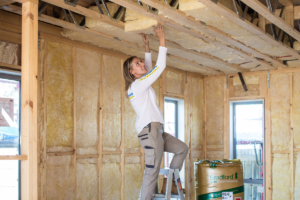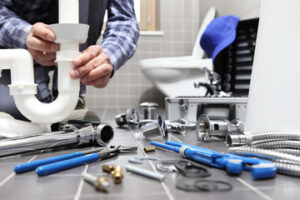Web design is more than just a visual design, it also involves ensuring that a site is user-friendly. This means making sure that the structure is clear, consistent and easy to use across devices.
The same rules that apply to architecture can be applied to web design. Unnecessary design elements should be removed to make the site look clean and professional. Contact Lock In Digital for professional help.

Colors
Color is an essential aspect of web design, influencing emotions and perceptions. It can establish a brand’s identity, communicate core values, and evoke the desired atmosphere within a website. By understanding color theory, leveraging psychological effects, and prioritizing accessibility, web designers can create engaging and effective websites.
Blue is a popular choice for many brands, evoking feelings of trust and calm. It relates to the sky and sea, offering tranquility and stability. It can also symbolize authority, as seen in police uniforms, and is associated with strength and success. On the other hand, red evokes passion and urgency, motivating users to take action. It can also be overwhelming or too vibrant for some audiences, particularly in more conservative industries or when trying to convey seriousness or credibility.
Pink is feminine and romantic, indicating a nurturing nature. It’s ideal for websites targeting women or young girls. Purple evokes spirituality and mysticism. It can inspire creativity and passion, or promote wisdom and compassion. Darker shades of purple can symbolize royalty and wealth.
The use of tints and shades allows for further customization of a color scheme. These variations are created by adding white or black to the original hue. Tints are lighter versions of the color, while shades are darker. Web designers should always consider color harmony when selecting a palette. Colors that are complementary (opposite on the color wheel) or analogous (adjacent to each other) work well together, as do high-contrast colors, which make elements stand out against each other and are commonly used in call-to-action buttons or ensuring text is legible.
Typography
Typography is an important element of web design that plays a vital role in the user experience. It involves choosing a typeface that suits the intended emotional response of the website’s content, as well as arranging the text in a way that makes it easy for users to read and understand. Typography also includes the use of color, which can enhance or detract from the overall look and feel of a site. The choice of alignment is also an important factor, with different options imparting different visual effects and influencing the user’s perception of information hierarchy.
In addition, typography can be used to create a sense of movement and depth on a website. For example, the use of rounded or flowing fonts can convey a playful and lighthearted feel, while angular and bold fonts can evoke an edgy and serious tone. This type of intentional use of typography helps to communicate a website’s message and reinforce the brand image.
Typography is also an integral part of responsive web design, ensuring that texts are clearly legible across various screen sizes and resolutions. In order to achieve this, careful consideration must be given to font size, weight, spacing, and contrast. Additionally, the use of scalable fonts can help ensure that all users are able to easily access and read the content on a website. With the increasing prevalence of mobile devices, effective typography is essential for creating accessible and inclusive digital experiences. Moreover, by following best practices for typography selection, readability, and accessibility, web designers can create a cohesive and visually engaging website that is both user-friendly and memorable. As such, it is important for web designers to stay up-to-date on emerging trends and best practices in typography.
White Space
White space is a valuable element in web design. It creates balance and harmony, enhances readability, and promotes simplicity. It also allows key elements to stand out and gain attention. Whether you’re building an elegant luxury brand site or a sleek online store for stainless steel drinkware, white space is essential to a successful web design.
Often overlooked, white space is the blank areas in your website design. It’s often mistaken for “wasted” space, but it’s actually a vital part of your design. It’s often used as the glue to hold different elements together, and when used properly, can dramatically improve your website’s usability and design.
Why is White Space Important?
A web page that’s tightly packed with content is difficult to read and can cause visual fatigue. The correct use of white space between paragraphs, lines of text, and around images can increase readability by up to 20%. White space is also a crucial tool for helping visitors understand the relationship between different content elements.
It also provides a sense of balance and harmony to the design, preventing elements from overwhelming the page or making it too busy. White space is especially helpful in highlighting key content or visuals, such as call-to-action buttons, headlines, and product images.
It’s important to experiment with line spacing and font sizes to find the perfect balance between readability and aesthetics. Larger fonts may need more white space between lines, while smaller fonts require slightly tighter spacing to maintain readability. However, it’s also important to remember that white space doesn’t necessarily have to be white. It can be any color to match your site’s overall design and create the same effect.
Navigation
One of the most important elements of web design is navigation, which is how visitors move around a website. Navigation should be intuitive, easy to use, and clear. The goal is to have a consistent layout across devices, so that visitors can easily find their way to the information they need.
Ideally, the number of items in the navigation menu should be kept under seven. More than that can make the website look cluttered and confusing, and may result in users abandoning their search. Using dropdown menus or hamburger menus is a good way to keep the number of items under control while still providing access to all the pages on the site.
In addition to the navigation menu, there should be a search bar on every page so that visitors can quickly and easily retrieve information. Including a search bar also helps to reduce the number of clicks required to find a specific page. While the “three clicks rule” has been discredited, it is a good idea to limit the number of clicks in order to prevent user frustration.
Labeling is an important part of web design because it can help users understand the hierarchy of navigation options. Clear and concise labels help them know what they’re clicking on, which is especially important for websites with complex navigation structures.
A good website will also include breadcrumb trails, which are links that show where the visitor is in the site’s structure. This is particularly helpful for visitors who are returning to a website or navigating back to a previous page.
Web designers should also consider how their navigation will work on different platforms, like mobile and tablet. It’s important to remember that the attention span of mobile users is often shorter than that of desktop users, so it’s best to keep navigation simple and quick.
Content
A great web design is important to keep in mind, but the content of a website is equally as crucial. It’s what engages your customers and converts them into paying customers. It’s also what helps search engines understand what a page is about so they can properly rank it.
Without great content, a potential customer may get turned off by a site and move on to another one that offers more information or has better details about what they’re looking for. Your content gives potential clients their first glimpse into your company or organization and showcases what you do best.
When it comes to web design, it’s important to separate the two concepts of “design” and “content.” It can be tempting for designers to jump straight into the visuals of a website without creating the actual content that will go on the pages. However, it’s essential to think about the content before designing the layout, as this can help guide the overall style and theme.
For example, if your business wants to post articles about their industry or their latest products, this content will need to be written and drafted before it can go live on the website. It’s essential to communicate with the designer about the content needed to be included so that they can include this in the design.
When a website is designed with content in mind, it can be more flexible than other designs that are built for visuals. This can allow for sidebars to be shifted below body text instead of being placed on the sides of the page, or it may allow for more columns of content to be included than would otherwise be possible with a rigid grid-based design.








